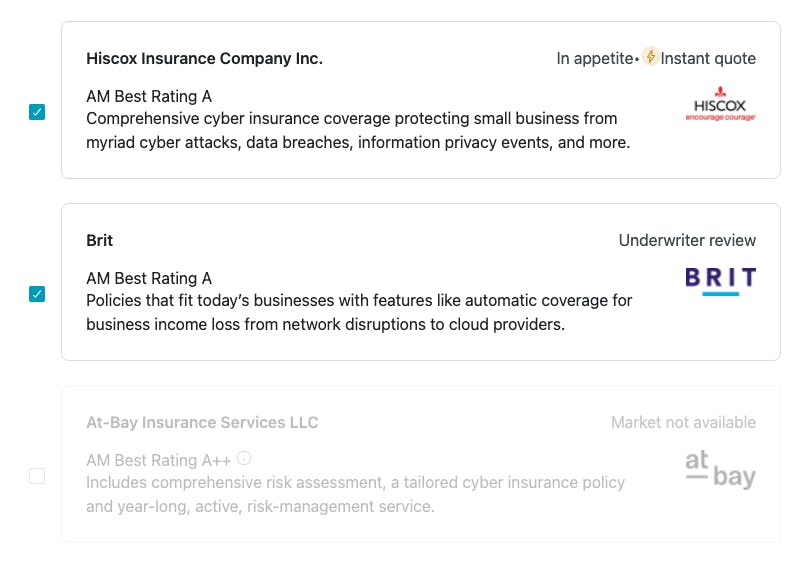Make Agents and CSRs Lives Easier, Start with Yes or No
By Alex Bargmann
—There are too many appetite guides (we've had many renditions and we're still working on making them as useful as possible).
And too often, even in the small commercial segment, the wholesale conversation ends up at “Well, send it over and we’ll take a look.” The agent, their staff, and the client then answer 30 questions on the market's supplemental (over the course of 10 round trips with the wholesaler). The wholesaler forwards the email and attachments to the underwriter. The underwriter responds, “Oh, to write the LRO we’d have to have updates on both locations post 19XX.”
On Pathpoint, all of our Instant Quote products have embedded appetite indications -- as you progress through our application, we run the information through the appetite we have access to from our carriers, to give the user an immediate view into whether we believe we’ll quote the account with one or more markets, decline it, or refer it to our underwriting team or a carrier underwriting team for human review. When I think like an agent, in most cases I’d prefer the first or the second scenario: I want to give my client visibility and certainty. If I get a “Maybe we’ll quote this” I get neither -- particularly small commercial accounts where you and the underwriter aren’t working iteratively over weeks to get a deal done. A fast yes or no is always our goal.

The whole nature of the E&S market is edge cases and dynamism, so there are countless cases where “Well send it over and we’ll take a look” is the right way to solve the problem. But for small commercial, this paradigm lags behind the quality of the admitted placement process where speed, ease of use, and visibility are paramount.
This is easier said than done: markets are shifting their rates, appetite, and guidelines. Our product team maintains a very tight loop with our underwriting team and the carrier teams to make sure we get keyed in early on changes. Our architecture lets us ship appetite changes very quickly -- with hours for normal changes and minutes in (rare) urgent situations. We built an automated testing framework that gives us visibility and certainty that the software is working as the appetite and guidelines specification require (do submission payloads quote at markets they should quote at? Declines? And so on. These pieces are evolving pretty rapidly -- we just shipped support for referral testing and verification and broader coverage for all the sub-entities of a submission, and their characteristics, that may impact appetite logic.
In addition, there are regulatory considerations: we don’t want to accidentally induce fraud by showing users how they can get a quote by misrepresenting material information. That’s why we only update the user interface on page load, vs. every single application field, so that it’s not clear what input is driving the change (after submission, we’ll share why something referred or declined in the quote review page).
Our goal is also to give agencies access to a wide variety of options through a single submission: this means binding products and brokerage options. There is intentional ambiguity, sometimes, in appetite for the latter. So when we drift into the “we’re not sure if this will quote someone is reviewing it” case, we are explicit and clear. Every submission has a log of all history, a status with each market, and our designers and engineers live and breathe in a mindset of UIs that constantly convey up-to-date status and next steps for us or the user (if any).
By submitting with Pathpoint, agencies are delegating the problem to us and we don’t take that lightly. If we (or a market) need further information to quote or bind, that needs to be crystal clear so that the problem is “delegated back” to the agency temporarily. This typically happens through massive nested email chains (“Fwd: Fwd: Fwd: Can you quote this ASAP?”).
Dynamic appetite that any agency can quickly test out to see if we can solve a problem, in addition to static and published appetite guides, are a piece of this puzzle. Knowing that our clients appreciate yes or no answers over “it depends” and weaving that into our design process and architecture is another piece. There are so many more. If you’d like to help us put them together and have feedback, email me at abargmann@pathpoint.com. If you’d like to come work on them, check out our Careers page.